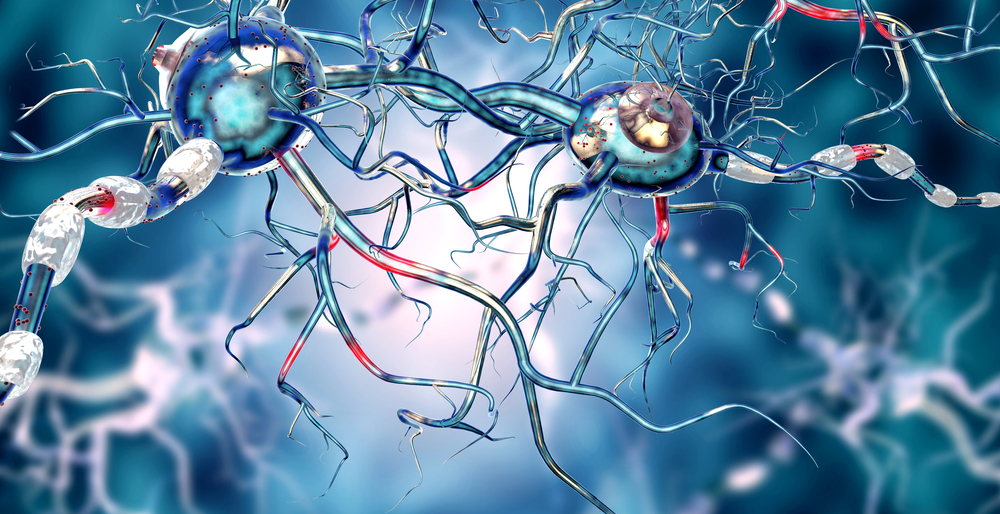Study Describes New Compounds With Potential to Treat ALS

Newly developed compounds derived from ebselen could be used to treat some types of amyotrophic lateral sclerosis (ALS), a recent study suggests.
The study, “Novel Selenium-based compounds with therapeutic potential for SOD1-linked amyotrophic lateral sclerosis,” was published in EBioMedicine.
About a fifth of familial ALS cases, as well as some cases of sporadic ALS, are characterized by mutations that affect the protein superoxide dismutase one (SOD1). Normally, this protein exists as a dimer — a stable pair of two proteins. However, mutant SOD1 forms aggregates (clumps), which are toxic to cells.
As such, a possible strategy for treating SOD1-driven ALS would be to stabilize the SOD1 dimer, thus preventing aggregation and subsequent toxicity.
Ebselen is a selenium-containing organic molecule that has been shown to have neuroprotective (brain cell-protecting) effects. Previous research showed that ebselen derivatives could stabilize the SOD1 dimer, specifically by targeting cysteine 111, a part of the SOD1 protein that is important in dimer formation.
In the new study, researchers built on previous findings, developing next-generation ebselen derivatives that are better at stabilizing SOD1 dimers and are more amenable to use as medicines.
“Our medicinal chemistry approach, guided by protein-ligand crystallography studies, focused on the design of ebselen based analogues that have improved in vitro potency coupled with excellent predicted CNS [central nervous system] exposure and improved solubility and metabolic stability characteristics,” study co-author Paul O’Neill, PhD, a professor at the University of Liverpool, said in a press release. “By employing this multi-parameter optimisation approach to drug design, the next key stage will be to screen our next generation compounds in appropriate disease models.”
The researchers first tested their new compounds in vitro (in the lab), using mouse neural cells in dishes. Expressing G93A SOD1 — a mutant form of SOD1 that causes ALS — in these cells reduced cell viability by about 38%, relative to expression of wild-type SOD1, which is not toxic to cells.
Many of the tested compounds were able to reduce this toxicity, in whole or in part. While some of the tested compounds were themselves toxic to the cells at high doses, other tested compounds showed little toxicity even at high doses, and they were still effective at preventing toxicity caused by SOD1. Notably, many of the compounds were effective at lower doses than ebselen itself, suggesting higher potency.
“It is very encouraging that a number of these novel Selenium compounds exhibited better in vitro neuroprotection in mouse neuronal cells than edaravone,” said study co-author Koji Yamanaka, MD, PhD, of Nagoya University in Japan.
“The fact that this new generation of organo-selenium compounds have better in vitro neuroprotective activity than edaravone holds a significance promise for the potential of this class of compounds as an alternative therapeutic agent for ALS treatment,” said Samar Hasnain, PhD, of the University of Liverpool. “The ability of these compounds to target cysteine 111 in SOD may have wider therapeutic applications targeting cysteines of enzymes involved in pathogenic and viral diseases including the main protease of SARS-Cov-2 (COVID-19).”
As a preliminary test in living organisms, the researchers treated mice with G93A SOD1-induced ALS with ebselen. Relative to control mice, this treatment significantly delayed disease onset (118.9 vs. 128 days). Ebselen treatment did not affect other assessed parameters, including survival.
“Oral treatment with ebselen did not extend total lifespan of G93A SOD1 mice, but significantly delayed a disease onset by [more than] 10 days, confirming that ebselen (and by extension ebselen-based compounds) can be absorbed in digestive tract and replicate its neuroprotective effect in animal model,” the researchers wrote.
“In vivo disease onset delay by ebselen has been demonstrated for the first time in ALS mouse model and further improvement can be expected from the new novel compounds in view of their improved in vitro protection,” Yamanaka said. “Choices are very limited for a current ALS therapy, therefore, we are excited to take a significant step forward for developing a new class of drug candidate for ALS.”






